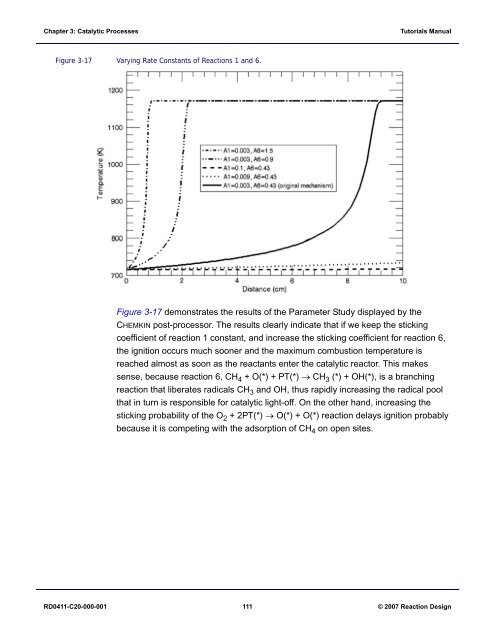Tutorials Manual
Tutorials Manual
Tutorials Manual
You also want an ePaper? Increase the reach of your titles
YUMPU automatically turns print PDFs into web optimized ePapers that Google loves.
Chapter 3: Catalytic Processes<br />
<strong>Tutorials</strong> <strong>Manual</strong><br />
Figure 3-17 Varying Rate Constants of Reactions 1 and 6.<br />
Figure 3-17 demonstrates the results of the Parameter Study displayed by the<br />
CHEMKIN post-processor. The results clearly indicate that if we keep the sticking<br />
coefficient of reaction 1 constant, and increase the sticking coefficient for reaction 6,<br />
the ignition occurs much sooner and the maximum combustion temperature is<br />
reached almost as soon as the reactants enter the catalytic reactor. This makes<br />
sense, because reaction 6, CH 4 + O(*) + PT(*) → CH 3 (*) + OH(*), is a branching<br />
reaction that liberates radicals CH 3 and OH, thus rapidly increasing the radical pool<br />
that in turn is responsible for catalytic light-off. On the other hand, increasing the<br />
sticking probability of the O 2 +2PT(*)→ O(*) + O(*) reaction delays ignition probably<br />
because it is competing with the adsorption of CH 4 on open sites.<br />
RD0411-C20-000-001 111 © 2007 Reaction Design
















